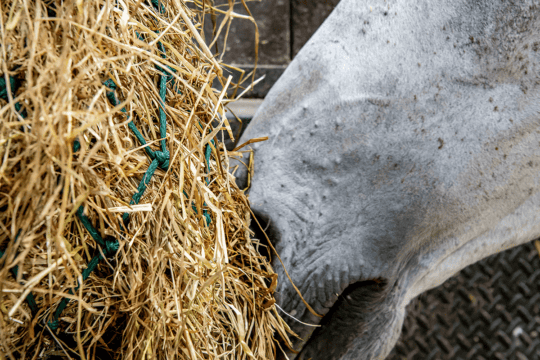Did you know your horse could become dehydrated after just an hour’s work? Nutritionist Kate Hore explains what to look for and how best to keep him hydrated
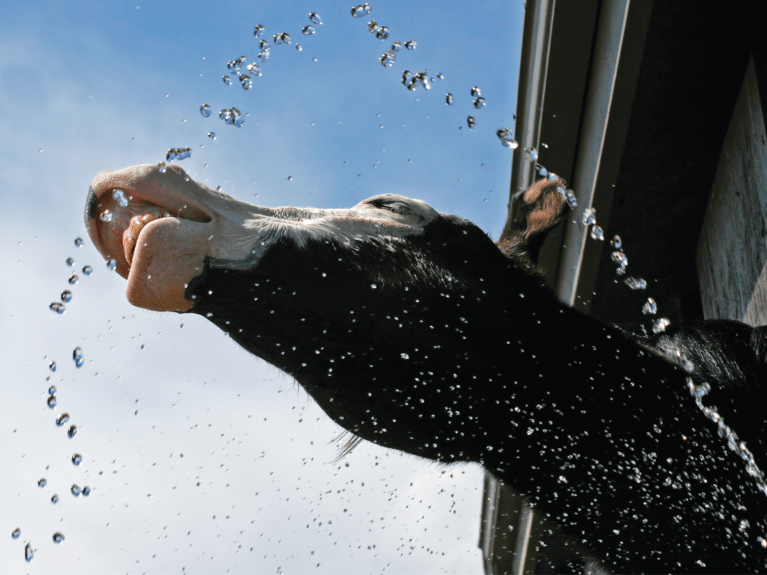
Water is, quite simply, the most important aspect of your horse’s diet – essential to life, it makes up 65–75% of his bodyweight. Even if your horse is only slightly dehydrated it can have a surprising effect on his body, such as a reduced appetite and poor performance, but in extreme cases dehydration can cause death. Keeping him fully hydrated is essential for ensuring he’s in the peak of health and fitness, but how do you know whether your horse is drinking enough?
Water intake
The amount of water consumed differs between individuals, so it’s essential you know what’s normal for your horse so you can spot changes that might indicate a problem. Horses don’t have a high thirst drive and only spend a few minutes a day drinking, so keep an eye on your horse to ensure he’s drinking adequately. Typically, an average 500kg horse in normal temperatures and doing light work requires about 25 litres of water, which can be achieved through drinking and eating.
A major factor in how much your horse drinks is his diet. Fresh grass contains up to 80% water, so he may not need an additional supply for day to day health, although it should always be available. In contrast, hay and concentrates only contain 15–20% water, so additional drinking water is needed, and horses on a hay and grain diet drink more often, particularly around meal time.
Strenuous work can increase your horse’s water requirement by up to 300%. Temperature also has an effect, with trials showing that in hot weather (over 33°C) water requirements in resting horses is 4–5 times higher than normal.
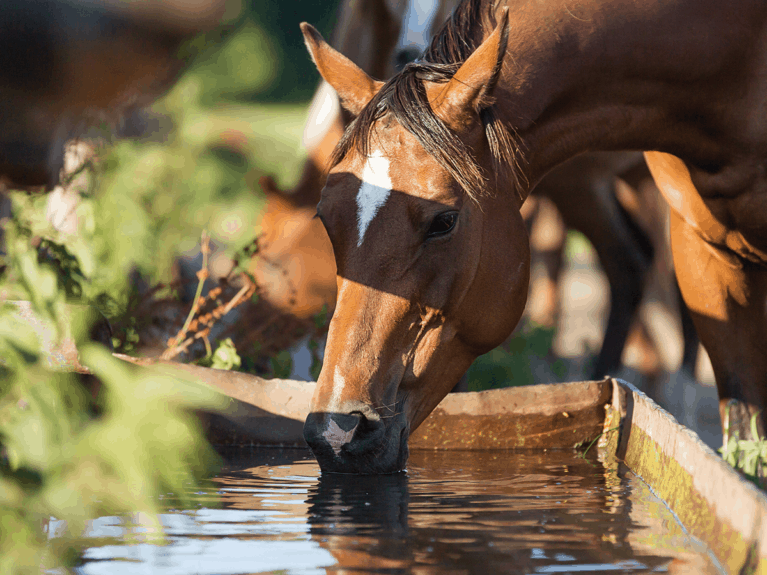
Top tip
Ensure the water you provide is clean and fresh. Ideally mains water should be used, but if your horse has access to natural water courses, ensure there’s no risk of pollution further upstream. Stagnant ponds should be avoided at all costs.
When could he get dehydrated?
For the average 500kg horse, mild dehydration is possible when around 7l of sweat has been lost, which is easily achieved by a horse who’s doing moderate work for one hour – for example, a fun ride or a lesson. If your horse isn’t adequately hydrated after, and hot weather or further exercise causes the sweat loss to double, it could become a serious issue.
So whatever you do with your horse, whether it be competing or hacking, it’s essential to make sure he stays well hydrated. It’s also important to remember that dehydration should be considered any time your horse sweats, not just when exercising – for example, during hot weather or after galloping about in the field.
Did you know?
Top level endurance horses working in hot, humid conditions have recorded sweat losses of up to 60l in a day, although around 40l is more normal for long-distance rides, and around 20l for eventers going cross-country.
Top tip
If travelling and competing your horse regularly, make sure you take water from home, as a familiar taste will encourage him to drink.
Signs of dehydration
Spotting dehydration isn’t always easy, but there are a few things to look out for…
- poor concentration and performance If you’ve jumped a few rounds at a show and are doing well, but the last round is disastrous, is that because you and your horse aren’t ready for that level or is it dehydration from travelling and competing?
- lethargy and depression If your horse seems quieter than normal, particularly following hard work or during warm weather, make sure you consider his hydration status
- darker-coloured urine If dehydration has continued for some time, this is something you may see
Did you know?
Mares who are lactating need to take on more water because water is lost through the milk they produce. At peak lactation, the average mare produces around 20l of milk per day, which equates to an increase in water requirement of 50–70%.
Water is vital for foals, too, because they need more per kg of bodyweight than adult horses – dehydration is a common cause of death in foals, usually associated with scouring. Make sure the water bucket is at a height that’s easy for the foal to reach – about 80cm is ideal.
Testing hydration levels
Traditionally, the pinch test has been used to check for dehydration, but studies have now shown that this isn’t always reliable. It can still
be used, but it’s best to combine it with other checks, too…
- pinch test Take a pinch of skin along your horse’s neck and let it go again. It should immediately flatten again back to normal. If it’s slow to go down then it could be a sign that your horse is dehydrated
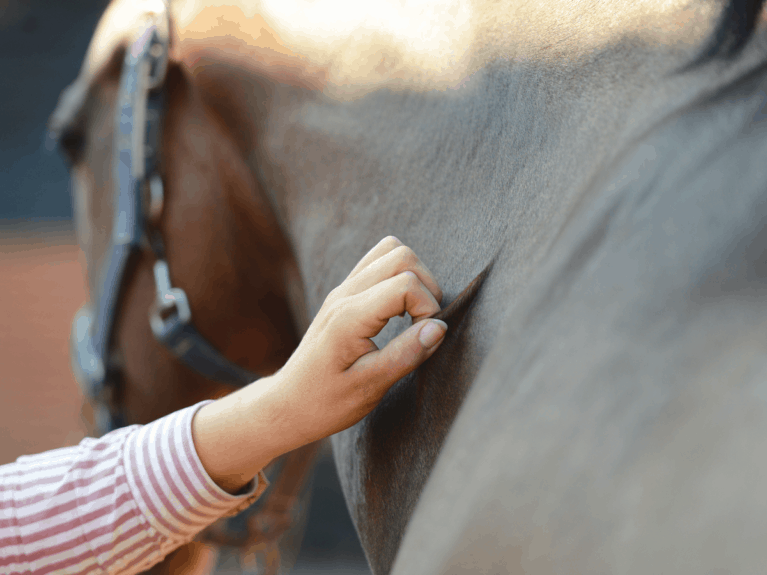
- gums Touch your horse’s gums to see how moist they are. They should feel a bit slimy, but if they’re tacky or on the dry side, it suggests he needs hydrating
- capillary refill time Press your thumb onto your horse’s gum so it goes white, then remove your thumb and time how long it takes for the gum to return to normal colour. In a hydrated horse, the blood vessels should refill within two seconds. Any longer and he could be suffering from dehydration
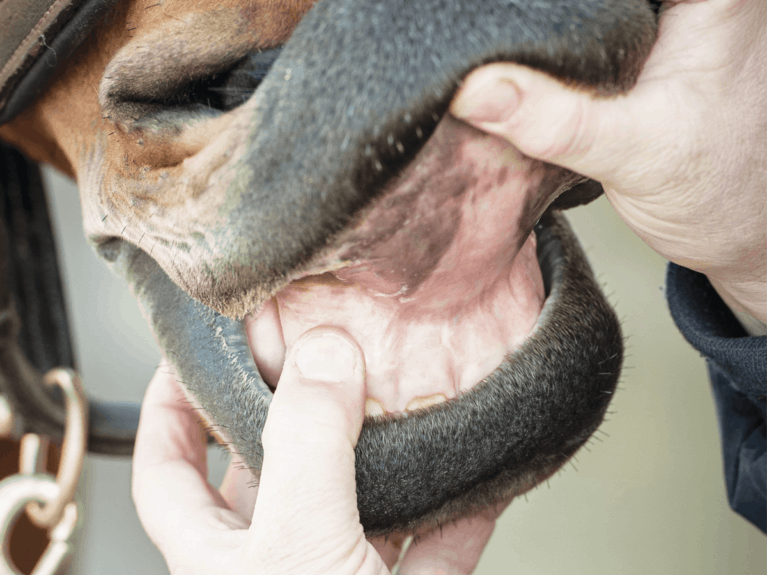
If your horse has become a little dehydrated, don’t worry, it should be easily resolved by making sure you get water into him quickly and efficiently. However, if you’re particularly concerned about his signs or are finding it difficult to rehydrate him, call your vet.
The importance of electrolytes
When your horse sweats, he doesn’t only lose water. Electrolytes, or body salts, are also lost – the most important of which are sodium, chloride, potassium, calcium and magnesium – and they’re essential for maintaining the acid-base balance within your horse’s body. If this balance is disrupted, it can result in exertional rhabdomyolysis (azoturia or tying up), ranging in severity from slight stiffness following work to acute muscle spasms. Over time, repeated dehydration can result in demineralisation, depriving muscle, bone and cartilage of the essential nutrients for post-exercise recovery.
A forage-based diet is an adequate source of most electrolytes, and under normal conditions and work levels you’d only need to add salt daily to provide sodium. Most horses are happy to select salt themselves as required, so a good option is to provide a salt lick in your horse’s stable and field so he can help himself. It’s important to check that he’s using it appropriately, though – occasionally horses won’t use a salt lick or they eat them like sweets! If your horse isn’t using his lick as intended, add a tablespoon of salt to his feed every day instead.
Electrolyte losses increase with work and temperature – an average horse can lose up to 90g of body salts in just two hours’ work. So in warmer weather or when your horse is working particularly hard, it’s essential to use a broad-spectrum electrolyte supplement. Even if your horse isn’t an obvious sweater, don’t dismiss electrolytes as they can be lost in other ways – for example, a significant amount of sweat is lost through evaporation from the lungs.
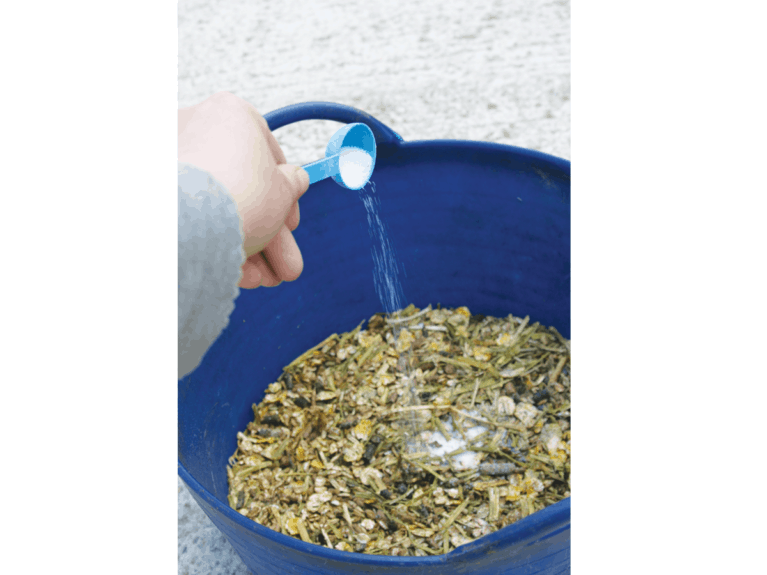
Feeding electrolytes
Many electrolyte mixes can be dissolved in water or feed. If you give them in water, it’s worth familiarising your horse with drinking it before competition day. Training your horse to take his electrolytes in water can be a great way to hide the different taste of water when away from home, which often puts horses off drinking. This can save you having to take lots of water wherever you go. Remember that if you’re dissolving electrolytes in water, plain water should always be offered, too.
Alternatively, adding electrolytes to a wet feed, such as sloppy sugar beet, can be a good way to encourage horses to take them. This is really useful for horses who don’t like drinking at a competition and can be invaluable in situations such as endurance rides, when rehydrating quickly is vital, but horses can often be reluctant to drink.
Electrolyte syringes are useful for administering them on the day of a competition, but due to their concentrated nature, they carry the risk of further dehydrating an already dehydrated horse, so they must be used with care. It’s important that water is given alongside the syringe, otherwise the electrolytes may draw water out of the body as they pass through the gut, by disrupting the water balance across the gut wall.
Mineral losses
Body salts aren’t the only nutrients lost in sweat, trace levels of some essential minerals are lost, too, including iron, copper and zinc. For your horse to be in the peak of health and fitness, it’s important that these are replaced.
If your horse is receiving a balanced diet – for example, the recommended amount of hard feed or forage plus a balancer – this will be enough to replace the lost minerals. However, if his diet isn’t properly balanced, you’ll need to give him a broad-spectrum vitamin and mineral supplement or a balancer, which can
be added to his feed.
Top tip
Always allow your horse to drink after exercise if he wants to, but if he’s particularly hot and still blowing, don’t let him guzzle down much more than half a bucket. Wash him down and walk or hand graze him until he’s cooled a bit, then offer him more to drink.
Keeping on top of hydration
With only small amounts of fluid loss causing dehydration, and mild dehydration having such an effect on your horse’s health and performance, it’s something we should all be keeping an eye on. To help keep dehydration at bay, ensure you…
- check troughs regularly to ensure they’re full and clean
- if using automatic waterers, check they’re refilling as they should
- hang salt licks in the field and stable
- feed electrolytes after hard work, when travelling and during periods of hot weather
- ensure water is available at all times
Did you know?
Horses prefer water to be slightly tepid rather than chilled. When arriving at a show, place a bucket of water in the sun to take the chill off, then your horse will be more likely to drink it.






